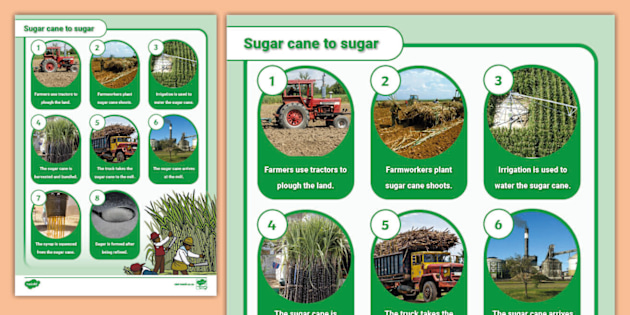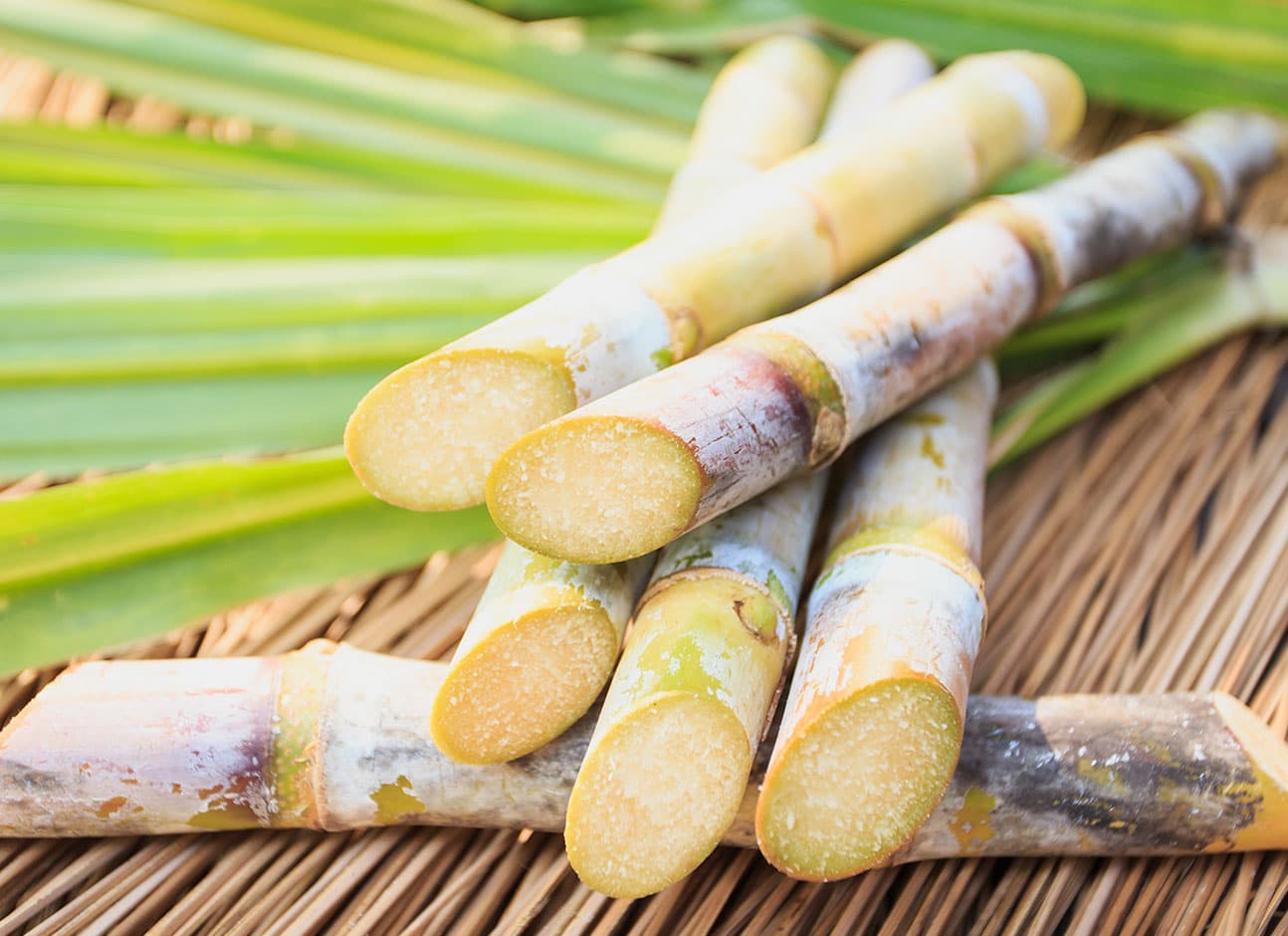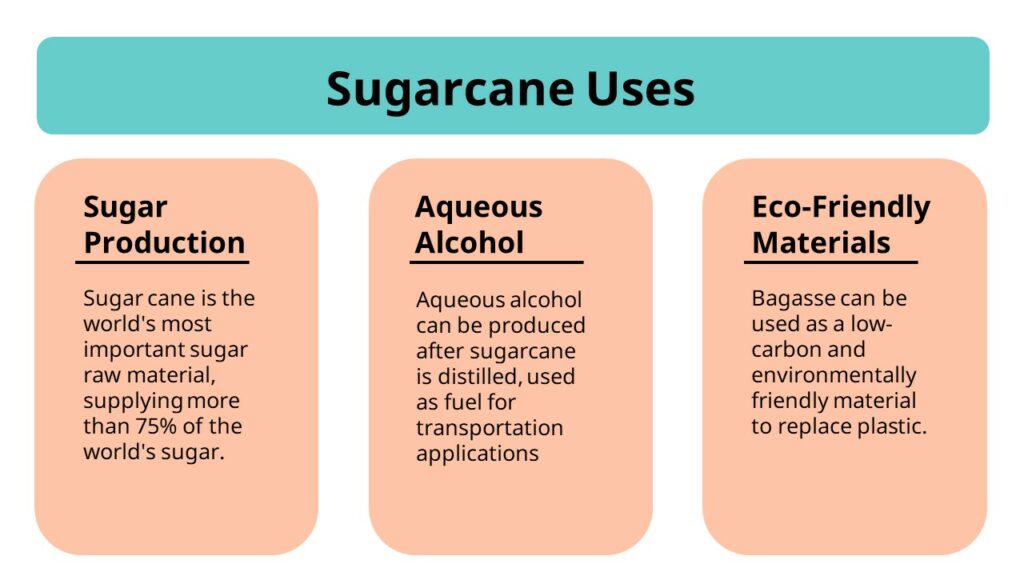Everything About Sugar Canes: What Are Sugar Canes Utilized For and Their Role in Global Farming?
Sugar walking canes work as a cornerstone of global farming, mostly recognized for their duty in sugar manufacturing. They likewise contribute to the production of spin-offs like molasses and ethanol. These facets not only sustain different industries however likewise influence financial security in rural areas. However, the farming of sugar walking sticks encounters significant environmental difficulties. Recognizing their multifaceted function motivates further expedition right into their agricultural methods and sustainability efforts.
The Agricultural Refine of Sugar Cane Growing
Sugar walking stick farming may differ by region, the fundamental agricultural process remains consistent. The initial step entails choosing high-yielding ranges appropriate for neighborhood climates. Prep work of the soil is vital, frequently requiring tillage and the addition of fertilizers to enhance fertility. Growing usually takes place throughout the rainy season, with farmers utilizing either entire stalks or cuttings to establish new crops.As the plants expand, they need thorough care, consisting of weed control, parasite management, and watering, relying on the ecological conditions. Farmers check the sugar walking cane's development cycle, which generally spans 10 to 24 months, prior to collecting. Collecting is labor-intensive, frequently conducted by hand or with specialized machinery, guaranteeing marginal damages to the stalks. Following harvest, the cane is moved to refining facilities. This meticulous farming procedure not only sustains regional economic climates however likewise plays a substantial duty in global agricultural practices, adding to food and power materials.
Sugar Production: From Cane to Crystal
The trip of sugar manufacturing begins the moment newly gathered sugar cane shows up at processing centers. The very first step entails washing and slicing the walking cane to prepare it for removal. Using high-pressure rollers, the juice is removed from the smashed walking stick, causing a wonderful fluid referred to as sugarcane juice. This juice undertakes information, where impurities are eliminated through the enhancement of lime and heat.Next, the cleared up juice is focused by boiling it to produce a thick syrup. This syrup is then taken shape by cooling down, enabling sugar crystals to create. The crystallized sugar is divided from the continuing to be syrup, called molasses, via centrifugation.Finally, the sugar crystals are cleaned and dried, resulting in the acquainted granulated sugar (What Are Sugar Canes Used For). This procedure changes raw sugar walking stick into a product that is important to different cooking and commercial applications, highlighting the value of sugar in global farming
Biofuels and Sugar Canes: A Sustainable Future
As the globe increasingly seeks lasting power solutions, sugar walking sticks have arised as a promising source for biofuels. The biomass obtained from sugar walking canes can be converted into ethanol, a sustainable fuel choice that substantially decreases greenhouse gas emissions compared to fossil fuels. This procedure not just gives a cleaner energy source yet additionally advertises energy freedom for lots of countries.In addition, sugar cane cultivation supports country economies by creating jobs in both farming and biofuel production sectors. Making use of sugar canes for biofuel production also encourages agricultural diversification, which can improve soil health and wellness and minimize reliance on solitary plants. Moreover, the by-products of sugar cane processing can be used for power generation, additionally contributing to a sustainable energy cycle. As countries undertaking to satisfy eco-friendly power targets, sugar walking canes are poised to play a crucial duty fit an extra lasting future in the biofuel landscape.

The Role of Sugar Canes in Drink Production
Sugar walking sticks play a substantial function in beverage manufacturing, offering as a primary active ingredient in rum and adding to the sweetness of numerous soft beverages. Additionally, their all-natural juices are utilized in various beverages, boosting taste and appeal. This versatility emphasizes the importance of sugar walking canes in the worldwide beverage industry.
Sugar Cane in Rum
Rum manufacturing is elaborately linked to the farming of sugar walking stick, a necessary crop that provides the essential fermentable sugars required for fermentation. This procedure begins with the removal of juice from gathered sugar canes, which is after that either fermented directly or refined right into molasses. Yeast is included to transform the sugars into alcohol, causing a diverse series of rum styles, from light to dark selections. The geographical region where the sugar walking stick is grown greatly affects the flavor account of the rum, with aspects such as dirt type and climate playing important functions. Nations like Barbados, Jamaica, and Cuba are renowned for their rum production, showing the historic and cultural importance of sugar walking stick within the global beverage industry.
Soft Drinks Sugar Resource

All-natural Juice Manufacturing Utilizes
In addition to its considerable function in soft beverage manufacturing, sugar walking cane is additionally essential in the natural juice industry. The juice extracted from sugar cane, recognized as walking stick juice, is celebrated for its natural sweet taste and one-of-a-kind taste profile. This juice is generally eaten fresh in different regions, particularly in exotic countries, where it is taken pleasure in as a rejuvenating beverage. In addition, walking cane juice right here serves as a base ingredient in an array of natural fruit juices and healthy smoothies, boosting both preference and nutritional value. Its all-natural residential or commercial properties make it an attractive choice to sweetening agents, attracting health-conscious consumers. Overall, sugar cane's adaptability in juice production emphasizes its value in contemporary beverage offerings worldwide.
Advancements in Sugar Cane Byproducts
Technologies in sugar cane by-products are leading the way for sustainable services in various markets. Biofuels originated from sugar walking cane use an alternative energy resource, while advancements in lasting product packaging are reducing dependence on traditional materials. These growths highlight the flexibility and capacity of sugar walking cane beyond its main usage in beverage manufacturing.
Biofuels From Sugar Walking Cane
How can the results of sugar walking stick add to sustainable energy options? The conversion of sugar cane into biofuels presents an appealing method for eco-friendly energy. By using the fibrous deposit, called bagasse, manufacturers can create bioethanol through fermentation processes. This bioethanol can function as a sustainable alternative to fossil gas, reducing greenhouse gas exhausts and reliance on non-renewable sources. In addition, molasses, another result, can be fermented to produce biofuels, making best use of source effectiveness. The power created from sugar walking cane not just gives a cleaner gas resource yet additionally enhances the total financial stability of sugar manufacturing. By incorporating biofuel manufacturing right into their operations, sugar walking stick industries can play an important role beforehand sustainable power remedies around the world.
Lasting Product Packaging Solutions
Lasting packaging solutions are increasingly being developed from sugar walking cane results, showcasing the convenience of this farming staple. Advancements such as naturally degradable plastics click this site originated from bagasse, the fibrous residue left after juice removal, are obtaining grip. These materials use a green choice to standard plastics, decreasing reliance on fossil fuels and decreasing carbon footprints. Additionally, sugar cane-based product packaging is compostable, breaking down normally without hurting the environment. Firms are now exploring these options to line up with consumer need for sustainability. As understanding of plastic pollution expands, the fostering of sugar cane-derived packaging is anticipated to increase, placing sugar walking sticks as a principal in the shift to greener product packaging services in numerous markets.
Economic Influence of Sugar Walking Stick Farming

Sugar walking cane farming has deep roots in numerous economies, its financial influence extends far beyond farming manufacturing. This plant functions as a substantial income for numerous farmers worldwide, specifically in establishing nations where agriculture is a key source of income. Sugar walking cane contributes to local economic climates via job creation in handling, harvesting, and growing. The industry likewise boosts growth in relevant industries such as transportation, equipment production, and food processing.Furthermore, sugar walking cane is a vital player in worldwide profession, influencing worldwide markets and costs. Countries that produce sugar cane commonly count on exports to improve their economic stability. The by-products of sugar cane, such as ethanol and molasses, diversify revenue streams for farmers and include worth to the agricultural industry. Generally, the financial implications of sugar walking stick farming are extensive, affecting not only farmers yet also nationwide economies and entire neighborhoods.
Environmental Factors To Consider in Sugar Walking Cane Growing
While sugar walking cane farming plays an important function in lots of economic climates, it additionally elevates considerable ecological worries that can not be neglected. The substantial usage of plant foods and pesticides in sugar walking cane growing frequently results in soil deterioration and water pollution. Overflow from these chemicals can contaminate close-by water bodies, harming water ecosystems. Furthermore, the monoculture practices common in sugar walking stick farming reduce biodiversity, making ecosystems a lot more at risk to insects and diseases.Deforestation is another vital concern, as land is frequently gotten rid of to give way for sugar plantations, resulting in environment loss for wild animals and raised carbon emissions. The high water usage needed for sugar walking stick watering can strain neighborhood water resources, particularly in dry areas. As worldwide demand for sugar proceeds to rise, resolving these environmental difficulties becomes crucial to assure lasting techniques in sugar cane farming.
Frequently Asked Questions
What Are the Nutritional Advantages of Sugar Cane?
The nutritional benefits of sugar walking cane primarily include its high carbohydrate web content, providing energy. Additionally, it contains vitamins, minerals, and antioxidants that might sustain overall wellness, though small amounts is important due to its sugar content.
How Does Sugar Cane Affect Citizen Ecosystems?
Sugar walking cane farming can greatly influence regional ecosystems by changing land use, influencing biodiversity, and calling for significant water sources. Additionally, it might cause soil deterioration and pesticide drainage, interrupting surrounding environments and wildlife populaces.
What Is the History of Sugar Cane Farming?

Are There Alternatives to Sugar Cane for Sugar Manufacturing?
Alternatives to sugar walking stick for sugar production consist of sugar beets, corn, and numerous tropical plants like sorghum and agave (What Are Sugar Canes Used For). These plants provide diverse resources view website of sweetness, each with distinctive growing requirements and ecological influences
How Do Climate Patterns Influence Sugar Cane Yields?
Climate patterns significantly affect sugar cane returns via temperature variations, rainfall amounts, and seasonal cycles. Dry spell or too much rains can impede growth, while optimal problems improve photosynthesis, ultimately impacting the amount and top quality of the harvest. The journey of sugar manufacturing begins the minute newly harvested sugar walking cane arrives at refining centers. The taken shape sugar is divided from the staying syrup, understood as molasses, through centrifugation.Finally, the sugar crystals are cleaned and dried, resulting in the familiar granulated sugar. Rum manufacturing is delicately linked to the growing of sugar cane, an essential crop that supplies the needed fermentable sugars required for fermentation. In addition, the monoculture techniques prevalent in sugar walking cane farming minimize biodiversity, making environments a lot more at risk to parasites and diseases.Deforestation is an additional crucial problem, as land is typically gotten rid of to make way for sugar ranches, leading to habitat loss for wildlife and increased carbon emissions. Alternatives to sugar walking cane for sugar manufacturing consist of sugar beetroots, corn, and numerous tropical plants like sorghum and agave.
Comments on “The Ultimate Guide to What Are Sugar Canes Used For in Food and Industry”